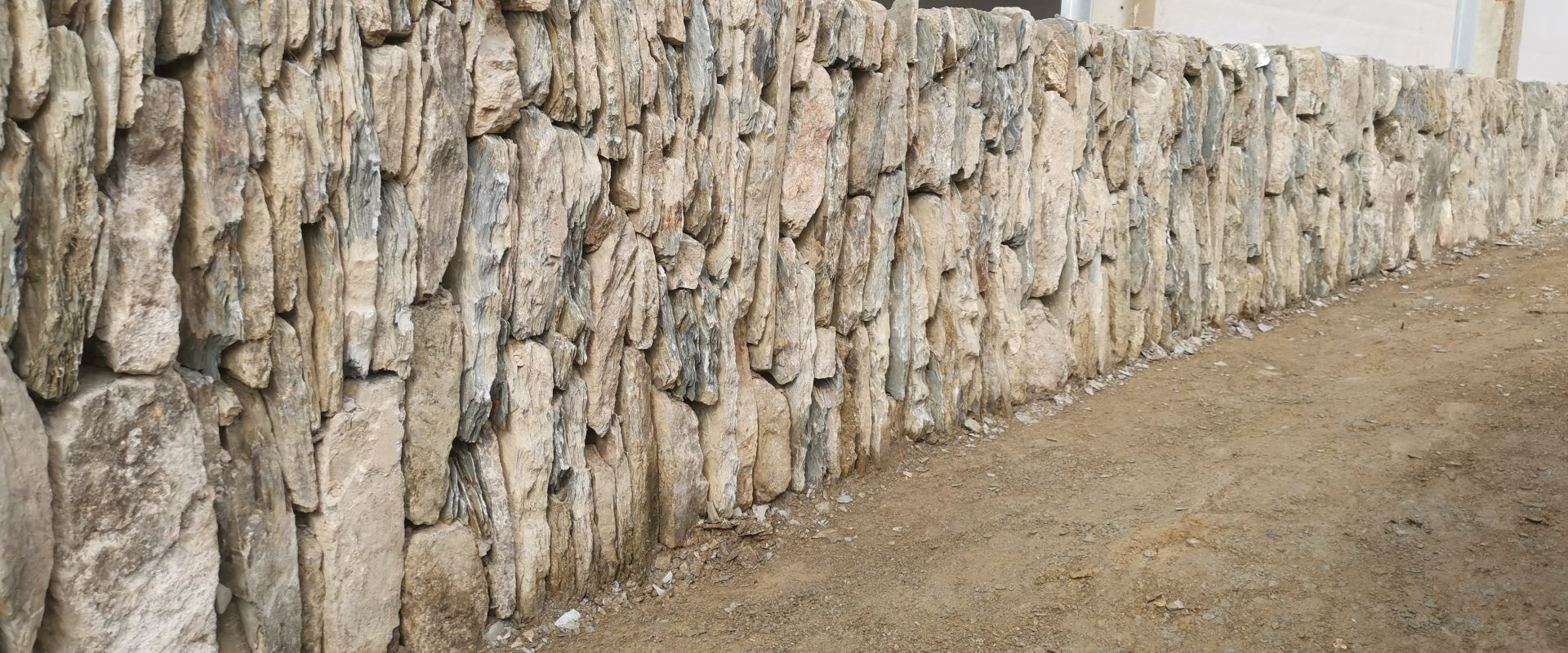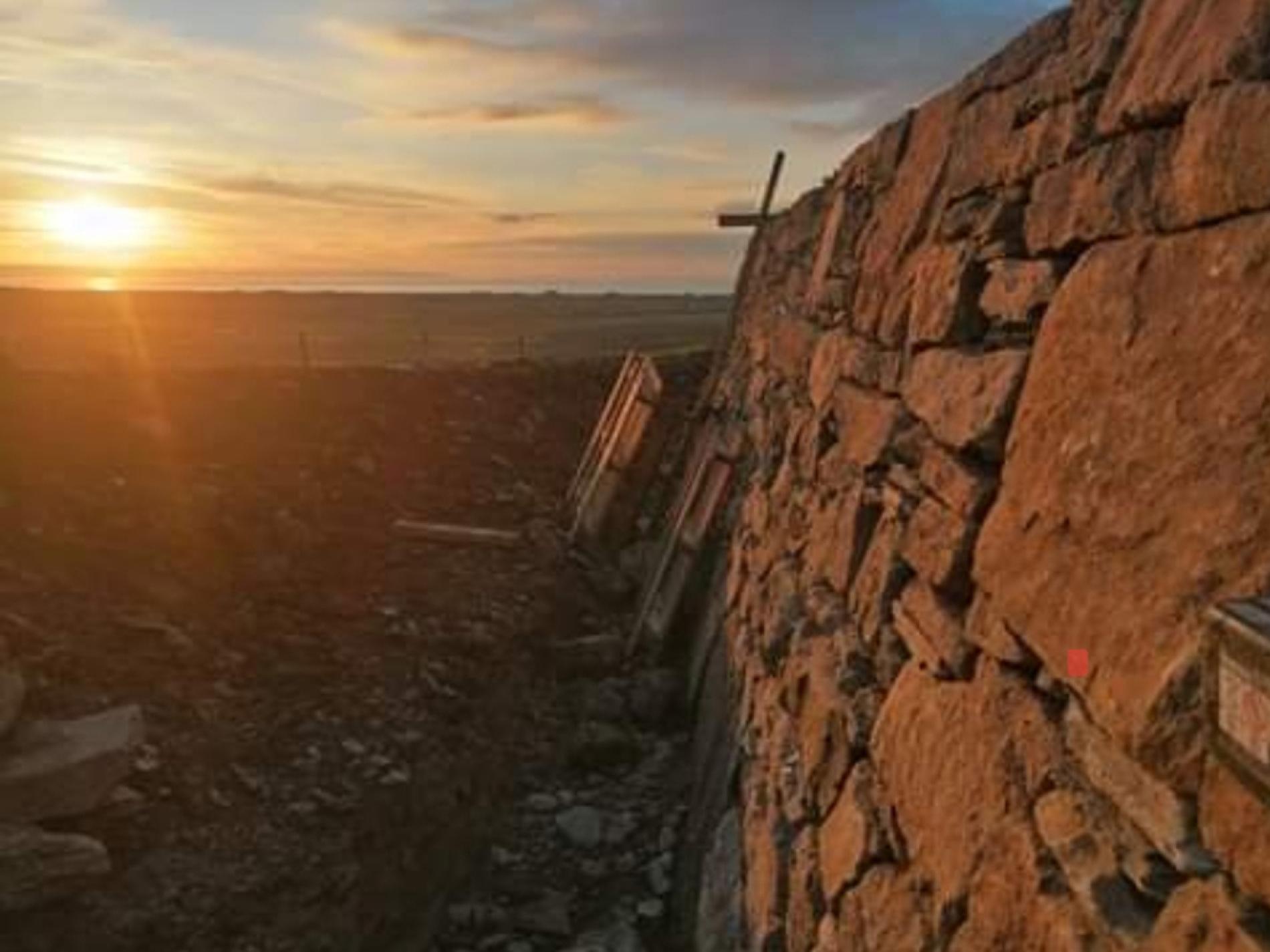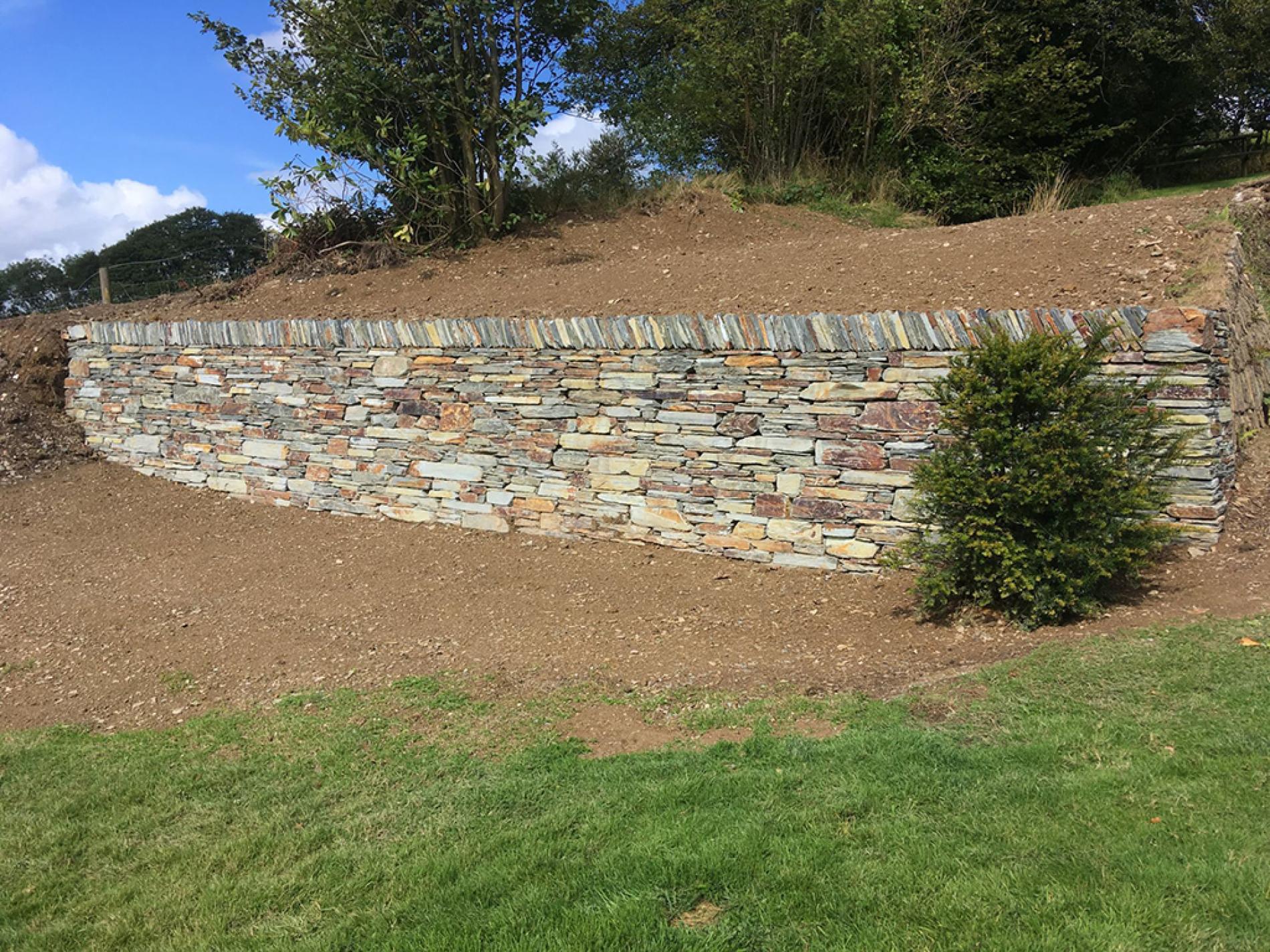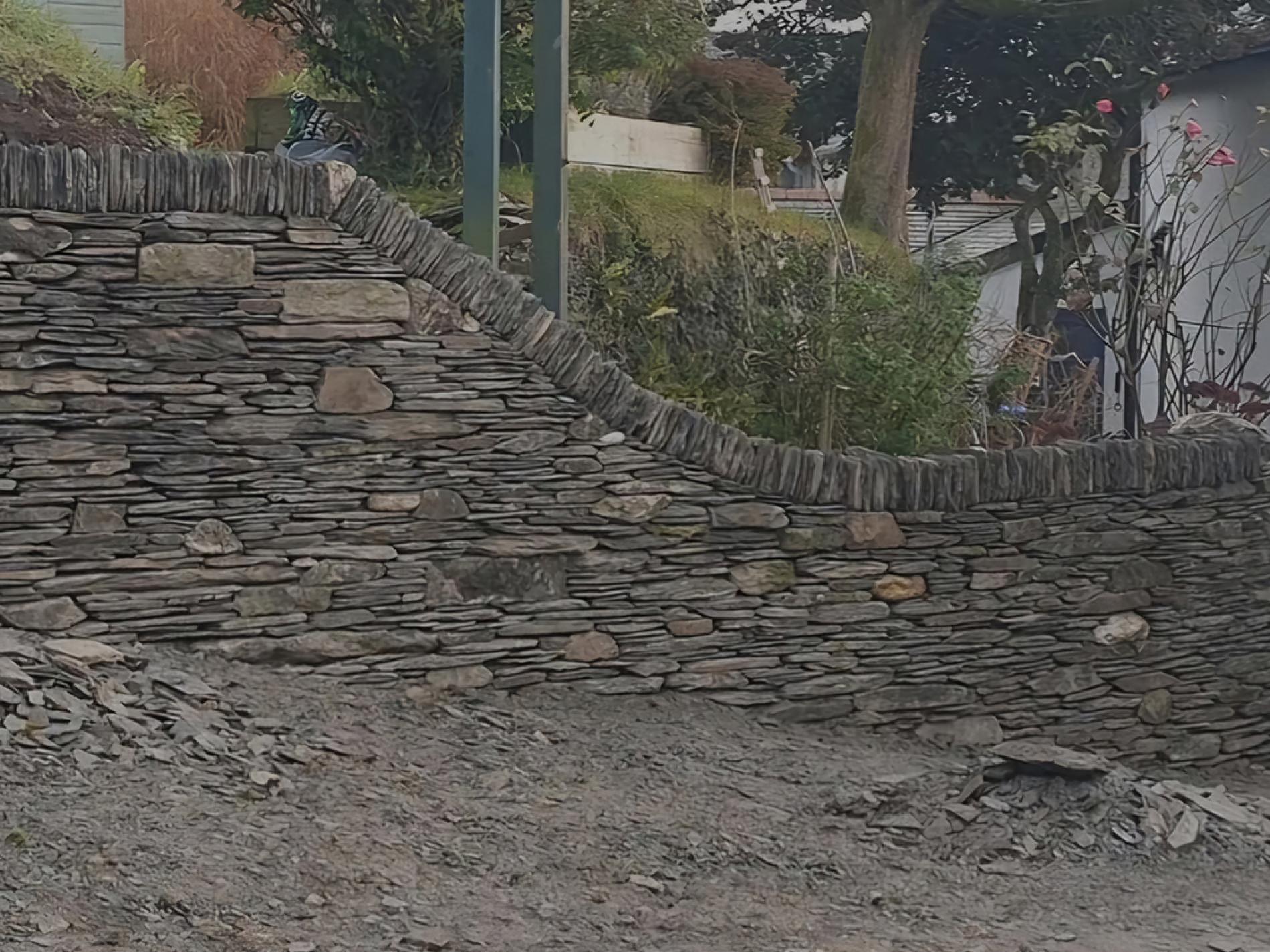
What are Ditched, Freestanding & Drystone Retaining Walls?
Our customers often ask us abouyt the differences between types of drystone walls so here is an explanation of the three main types of drystone walls. Our family have been stonemasons in Devon dating back as far as the 1600's and we have been building drystone walls across Devon for centuries!
What is a Drystone Ditched Wall?
A drystone ditched wall is a type of wall made from stones without using mortar, that also has a ditch or trench along one or both sides. Drystone ditched walls are often found as a wall in agricultural land where there is a lot of stone nearby, typically found in Devon and Cornwall, the Cotswolds and the Yorkshire Moors.
Features of a Drystone Ditched Wall:
The wall is constructed by carefully placing stones on top of each other, interlocking them without using a mortar. It takes a trained eye to choose each stone individually. Knowing what stone will fit where with a clean edge on the exterior. The stones are selected so that their weight and shape hold them in place using gravity, creating a stable structure.
A ditch, or trench is typically dug along one side of the wall, sometimes on both sides, usually on the side facing the field or boundary being marked. The purpose of the ditch is to anchor the wall in place and can prevent erosion of the wall’s base. The ditch will also help with drainage and helps to move water away from the wall that would cause erosion.
The drystone wall itself is made up of carefully selected stones that are stacked in a specific way to ensure the wall's stability and strength. The ditch often runs along the outside of the wall to further prevent water damage and to increase the stability of the wall.
What is a Drystone Retaining Wall?
A drystone retaining wall is a wall that is built without the use of mortar where the stones are carefully selected and placed in a way that allows them to interlock and support each other. These walls are typically used to retain soil or separate different levels in a garden or field. This would be where one level is higher than the other and the drystone retaining wall supports the upper level and prevents it from collapsing. A great example is a tiered garden where the drystone retaining wall is used to separate the different tiers and prevent the soil from collapsing.
The key benefits of drystone retaining walls are that they allow drainage through the gaps between the stones so that there is no build up of water. They are also very easy to repair and look beautiful and as the walls age and nature takes its course, the walls actually become stronger. Usually, plants or weeds growing within these walls actually improve the strength of the wall!
Drystone retaining walls are often found in agricultural ground where there is easy access to stone and if constructed well by a skilled craftsmen, they can survive for centuries, far longer than any wall that uses a mortar as these retain water and lead the wall to collapse.
The foundation is of the drystone retaining wall is particularly important, it must be strong enough to support the weight of the wall and any soil or water pressure. Larger, and flatter stones are placed at the bottom, with smaller stones filling in the gaps higher up. Woodview Stonework also use “through stones,” which extend from one side of the wall to the other to help bind the structure together.
What is a Freestanding Drystone Wall?
A freestanding drystone wall is built without any mortar where the stones are placed to create a stable wall that uses the weight of the stone, gravity and the stone shape and size to create a wall that is stable. These walls are called freestanding as they are not connected to any other structure like a retaining wall. They are essentially the same as ditched drystone walls but without a ditch and are constructed in the same manner.
A freestanding drystone wall uses forces and careful construction to maintain its integrity, these types of walls are known to exist for centuries and are found in the UK, Ireland and the mediterranean where there is an abundance of stone nearby.
These types of walls need to be built by skilled craftsmen that understand the construction techniques. They typically have larger, heavier stones at the base, and smaller stones fill in the gaps. The design is usually tapered so that the wall is wider at the base and narrower at the top, providing more stability.
Freestanding drystone walls are usually found in farmland and arable land as they define boundaries and keep livestock enclosed. In more modern times, they are also used for character and period homes within the gardens as they are aesthetically pleasing and fit in with heritage buildings characters.



